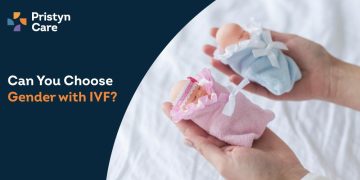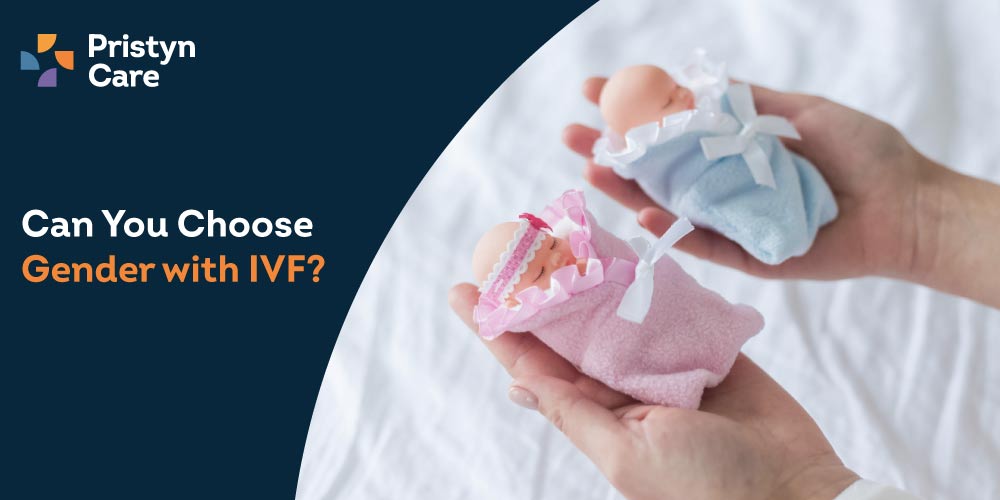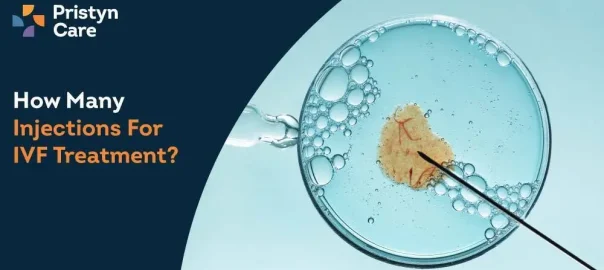![]() Views: 792
Views: 792
Can You Choose Gender with IVF?
Dedicated Support at Every Step!
Our Doctors are available 24 hours a day, 7 days a week to help you!
Call Us9513-316-643Table of Contents
Overview of IVF (In Vitro Fertilisation)
Brief Introduction to Gender Selection in IVF
As advancements in medical science continue, the realm of IVF has expanded to include gender selection. This is an option where parents-to-be can choose the gender of their child. Gender selection in IVF is achieved through Preimplantation Genetic Testing (PGT), a procedure executed before implantation that identifies the sex of the embryos. However, it's important to note that this practice is subject to ethical debates and legal regulations, varying across different countries.
Understanding Gender Selection
Gender selection in IVF isn't merely choosing pink or blue. There's a complex scientific process behind it. The gender of a baby is determined by specific chromosomes carried by the sperm: X and Y. If an X-carrying sperm fertilises the egg, it results in a female embryo (XX). Conversely, if a Y-carrying sperm fertilises the egg, it results in a male embryo (XY). In gender selection using PGT, embryos are tested for their chromosome composition, allowing parents to select the preferred gender for implantation.
Explanation of Sex Determination in Humans
Sex determination in humans doesn't just happen at random. It’s based on our genetic makeup. Every human cell carries 23 pairs of chromosomes, including one pair of sex chromosomes. Females have two X chromosomes (XX), and males have one X and one Y chromosome (XY). When conception happens naturally, the baby's sex is determined by which type of sperm (X or Y) fertilises the egg first. However, with IVF and gender selection, this process can be guided, allowing parents to have a say in their baby's sex.
While we've delved into the world of IVF and gender selection, it's crucial to remember that these procedures should be undertaken under the recommendation and guidance of experienced doctors. There are various factors to consider, including potential risks and ethical considerations. Furthermore, IVF doesn't guarantee a successful pregnancy and should be approached with realistic expectations.
No Cost EMI, Hassle-free Insurance Approval
Ethical and Legal Considerations of Gender Selection
Choosing the gender of your baby before conception, also known as gender selection, is a topic that often gives rise to intense debates. While advances in medical technology have made this a real possibility, the ethical and legal implications associated are numerous and complex.
While some parents believe gender selection can help them balance their families or avoid genetic diseases, others oppose it for various ethical reasons. They argue that it could lead to a skewed sex ratio, reinforce sexist stereotypes, or even pave the way for "designer babies". In general, they consider it as an interference with nature's course.
Ethical Debates Surrounding Gender Selection
The ethical debates surrounding gender selection primarily focus on the sanctity of life and respect for natural processes. Some people believe that selecting a child’s gender infringes upon these principles.
- Equality: There are concerns that gender selection could reinforce harmful societal biases. For instance, if a particular gender is favoured over another, it could lead to an imbalance in the sex ratio and contribute to societal inequality.
Slippery Slope Argument: Critics of gender selection worry that allowing parents to choose their child’s sex might encourage further genetic manipulations, leading to the creation of so-called 'designer babies'.
Respect for Nature: Some people argue that choosing a child's gender is an undue interference with nature's course.
Legal Regulations and Restrictions in India
In India, there are strict laws against gender selection due to historical and ongoing issues with sex ratios. The Pre-Conception and Pre-Natal Diagnostic Techniques (PCPNDT) Act was enacted in 1994 to prevent the misuse of techniques for pre-natal sex determination leading to female foeticide.
Under this act:
The use of any technique, including ultrasound, to determine the sex of a foetus is prohibited.
• Any form of advertisement relating to preconception and pre-natal determination of sex is also banned.
• Breaches of the law can result in hefty fines and imprisonment.
Remember, while medical technology may provide us with the methods to choose our child's gender, we must always consider the ethical implications and legal boundaries that exist. These are not just regulations, but protections for our society and future generations to ensure they grow up in a balanced and fair environment.
Factors Influencing Gender Selection
Gender selection, also known as sex selection, is a process where the gender of an unborn child is determined. It involves influencing or selecting the sex of a child through various methods like Preimplantation Genetic Diagnosis (PGD) and sperm sorting. The factors influencing the success of gender selection can be broadly divided into two categories:
- Technical Factors: These include the method chosen for gender selection and the skill level of the doctor performing the procedure. PGD, which involves screening embryos for their gender before implantation, tends to have higher success rates compared to sperm sorting.
- Biological Factors: These include the age of the parents and their general health condition. Younger individuals with good health have a higher chance of successful gender selection.
Success Rates and Accuracy
The success rate and accuracy of gender selection are dependent on various factors, such as the method used and the individual's health condition. PGD as a method for gender selection is said to be almost 100% accurate in determining the gender of an embryo, but it is a costly procedure. Meanwhile, sperm sorting methods have lower success rates and accuracy.
It's crucial to understand that no method guarantees 100% success and there may be ethical concerns associated with these procedures. It is advisable to consult with your family physician before making any decision.
Impact on Family Dynamics and Society
Gender selection can have significant impact on both family dynamics and society. The desire for a specific gender may stem from cultural, social or personal preferences, which might alter family relationships if not met.
At a societal level, gender selection can lead to an imbalance in population sex ratio. In societies where one gender is preferred over the other, this could lead to serious societal issues such as increased crime rates due to inadequate mating prospects for one gender.
Psychological Effects on Families
The psychological impact of gender selection on families can range from happiness and satisfaction if they get the desired gender, to disappointment and emotional distress if the procedure fails or doesn't yield the expected results. This could potentially lead to feelings of guilt, anxiety, and depression.
Societal Implications of Gender Selection
Unchecked gender selection could lead to societal disparities and discrimination. For instance, in societies with a preference for a particular gender, an imbalance can lead to a host of societal issues like increased rates of female foeticide or neglect of one gender. Therefore, such practices must be monitored and regulated to prevent their misuse.
In conclusion, while gender selection could seem like an attractive option for couples desiring a specific gender, it's essential to consider all factors including the potential impact on family dynamics, psychological implications and societal consequences.
Availability of Gender Selection Services in Different Regions
Gender selection services are not uniformly available across India. Urban areas and major cities have a higher concentration of healthcare providers who offer these services. In contrast, smaller towns and rural areas might have limited options due to fewer medical facilities and less advanced technology.
Alternatives to Gender Selection
Though gender selection through medical intervention is one way, there are alternatives available. Some couples opt for adopting children or using donor sperm or eggs to balance their family.
Natural Methods for Influencing Gender
If you're exploring non-medical, natural methods to influence your baby's gender, there are several theories out there like timing intercourse according to ovulation or following certain diets. However, it's important to note that these methods are not scientifically proven and success rates vary greatly.
Other Family Planning Options
Family planning is a broad field with many options other than gender selection. Couples can consider options like contraception, fertility treatments, adoption or surrogacy based on their individual needs, values, and circumstances.
Final Thoughts on the Implications and Future of Gender Selection in IVF
Finally, while the technology for gender selection in IVF continues to advance, it's important to weigh the ethical, social and financial implications. With more discussions, research, and regulation in this area, the future may bring newer alternatives and broader accessibility for all families across India.
FAQs
- Is it possible to choose the gender of a baby with IVF?
Depending on the laws in your country, doctors can use a technique called Preimplantation Genetic Diagnosis (PGD) during the IVF process to determine the gender of embryos. This allows parents to choose the gender of their baby. However, in India, gender selection is illegal due to ethical concerns and the risk of gender imbalance. - How does gender selection work in IVF?
Gender selection in IVF involves using PGD to identify the chromosomes of embryos. Since males have XY chromosomes and females have XX, this process can determine whether an embryo is male or female. The chosen embryo is then implanted into the mother's uterus. - What are the odds of having a boy or girl with IVF without gender selection?
Without using any method of gender selection, the chances of having a boy or girl through IVF are almost equal - around 50/50. This is similar to natural conception. - Do I have a better chance of conceiving a boy or girl with IVF?
Using IVF does not naturally increase your chances of conceiving a boy or girl. The sex of the baby depends largely on the sperm carrying an X (female) or Y (male) chromosome that fertilises the egg. - Are there any ethical concerns associated with choosing your baby's gender through IVF?
Yes, there are several ethical concerns related to gender selection through IVF. These include potential misuse for non-medical reasons, creating a gender imbalance in society and reinforcing gender stereotypes. - Is choosing your baby’s sex harmful to their health?
Choosing your baby’s sex is not harmful to their health as long as it is carried out by experienced medical professionals. However, like any medical procedure, there may be risks associated with IVF and PGD. - Can all fertility clinics perform gender selection as part of IVF?
Not all fertility clinics can perform gender selection, and the legality of this procedure varies by country. In India, for instance, gender selection is prohibited. - Can gender selection with IVF guarantee the baby’s sex?
While PGD used in gender selection has a high accuracy rate of around 99%, it is not 100% guaranteed. Errors can occur during the embryo biopsy or chromosomal analysis. - Are there any risks associated with PGD?
Like any procedure, PGD has potential risks. These include damage to the embryos, inaccurate results, and a small risk of losing the pregnancy after IVF and PGD. - Can we use IVF and gender selection for family balancing?
In some countries where it's allowed, yes. Gender selection can be used for family balancing, which means selecting a baby's sex to achieve a balanced number of males and females in the family.











